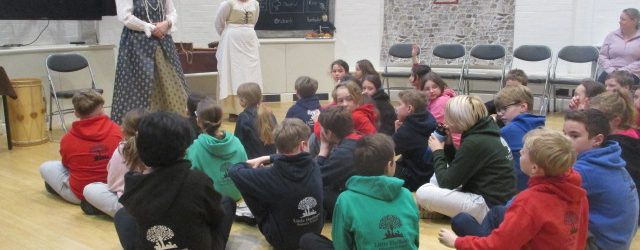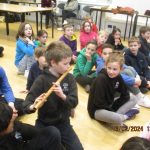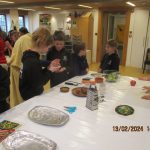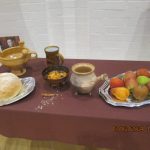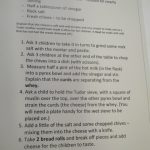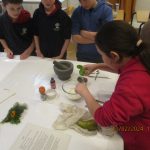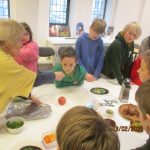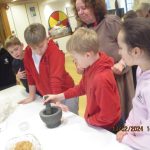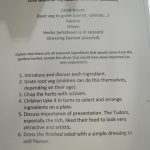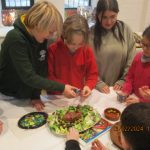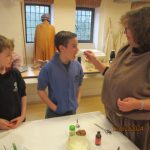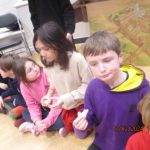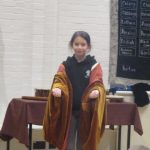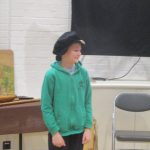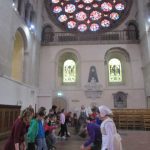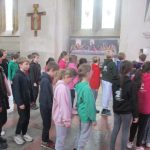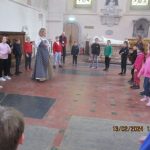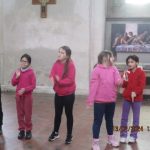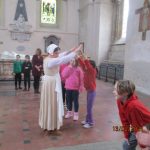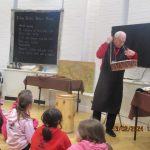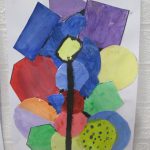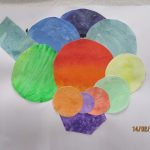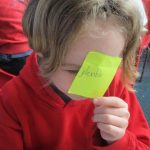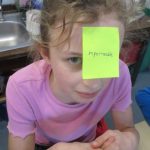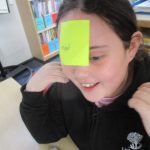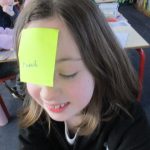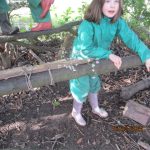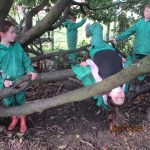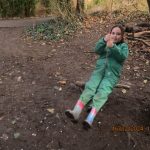On Tuesday we had the pleasure of immersing ourselves into Tudor life during a visit to St Albans Cathedral. Our day was divided into two engaging sessions designed to provide insight into various aspects of Tudor culture. In the first session, we explored Tudor clothing, and discovered the differences between the clothing worn by the wealthy and the less affluent. As part of this exploration, we had the opportunity to partake in Tudor dances, including the elegant Pavane, which was usually performed at the royal court, as well as lively dances performed by the servants and maids, such as ‘Thread the Needle’ and ‘Washer Woman Bransle’. These dances provided a glimpse into the social gatherings and festivities of Tudor times. Following this, we were introduced to Tudor musical instruments, including the early violin, known as the viola da gamba, the early trumpet, called the sackbut, and the early flute, known as the recorder. In the afternoon, our culinary adventure began as we set out to recreate and savour Tudor delicacies. We made a vibrant salad comprising lettuce, sweet potato, chives, raisins, olives, and blood oranges. Additionally, we explored the process of crafting cheese from double cream and vinegar, resulting in curds and whey.
In our recent art lessons, we’ve been delving into the fascinating world of Orphism, an artistic technique that emerged in the early 20th century. Orphism is characterised by its use of vibrant colours, geometric shapes, and rhythmic patterns to create visually striking compositions. One of the most renowned artists associated with Orphism is Sophie Delaunay. Her paintings often feature bold colours arranged in dynamic compositions, conveying a sense of energy and movement. Delaunay’s work exemplifies the principles of Orphism, with its emphasis on colour, harmony and abstract forms. After learning about Orphism, we had the opportunity to apply these principles in our own artwork. Each of us created a piece using the Orphist technique, experimenting with colours and shapes to evoke a sense of rhythm and harmony. Following the completion of our artwork, we engaged in a thoughtful evaluation process. We reflected on our creative choices, considering how our use of harmonious and vibrant colours contributed to the overall mood and impact of our pieces. By analysing our creations in this way, we gained a deeper understanding of the principles of Orphism and how they can be effectively utilised in artistic expression.
Throughout this half term’s science curriculum, our focus has been learning about materials and their properties. We have studied a vast number of scientific terminology, from the solubility of substances to the malleability of materials, and from irreversible changes to the translucency of materials. This week, our emphasis shifted to the practical application of these concepts, contemplating why specific objects are selected based on their inherent properties. We also engaged in interactive activities, such as a modified rendition of the popular game “Headbanz,” to reinforce our comprehension of these vocabulary terms.
And finally, we loved explored our fantastic forest this week. We were in search of a hippo this week, but sadly it couldn’t be found! However, we still explored our surroundings, noticing the milder weather. Is Spring finally on its way?!

